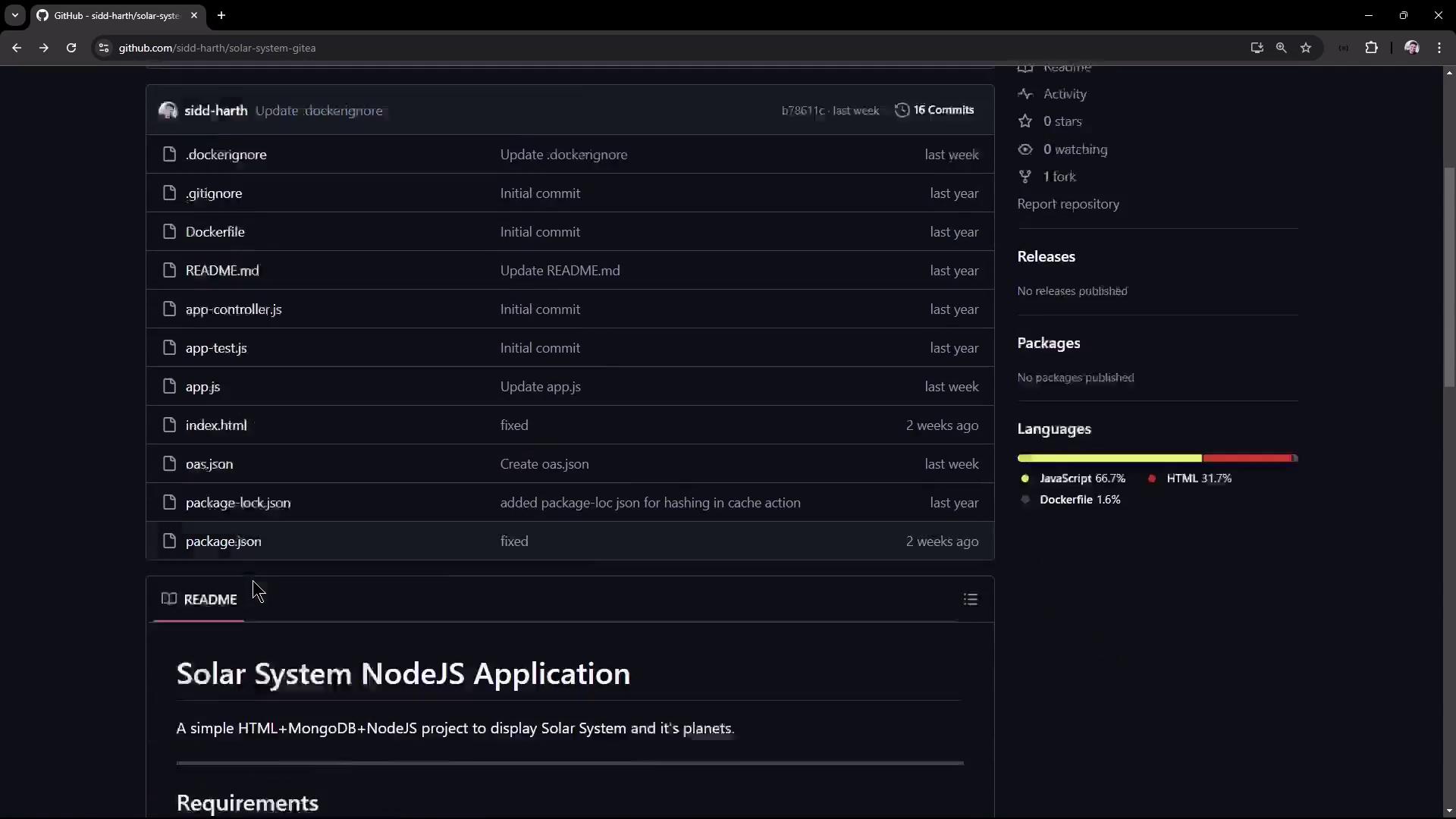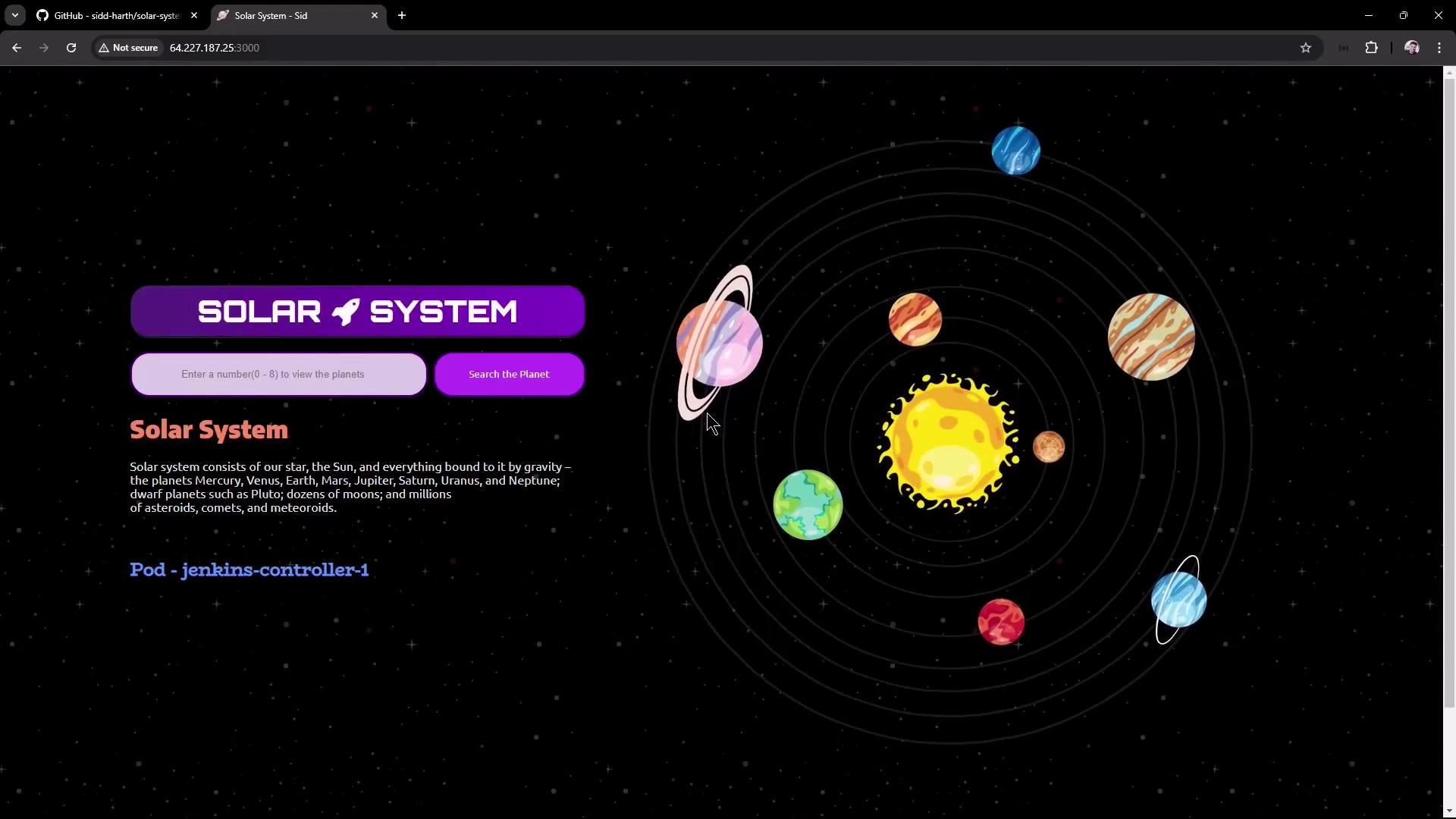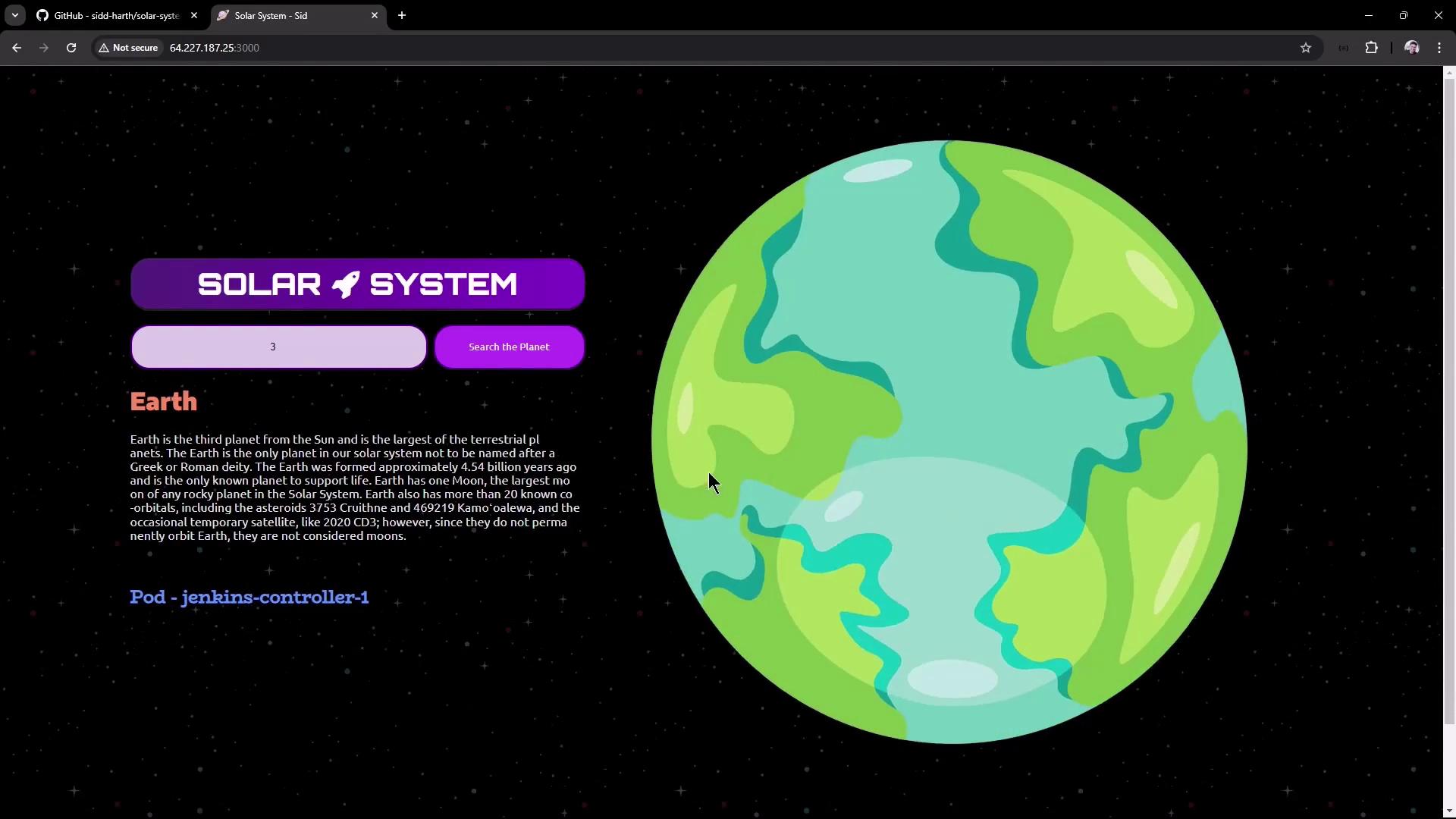Certified Jenkins Engineer
Setting up CI Pipeline
Demo Run and Test NodeJS App on Local Machine
In this guide, we’ll walk through running and testing a Solar System Node.js application on your local (or virtual) machine. We’ll cover:
- Cloning the repository
- Inspecting
package.json - Reviewing application code (
app.js, controllers, client) - Executing unit tests and enforcing coverage
- Containerizing with Docker
- Exploring OpenAPI specs
- Running the app and demoing endpoints
- Automating everything with Jenkins pipelines
Prerequisites
Ensure you have these versions installed:
node --version # v8.11.3+
npm --version # v6.1.0+
Install project dependencies:
npm install
Run a quick test:
npm test
npm run coverage
Repository Overview
The Solar System app uses:
- Express for the REST API
- Mongoose for MongoDB integration
- Mocha & Chai for testing
- nyc for code coverage
- serverless-http for AWS Lambda support

Project Structure
| File/Folder | Purpose |
|---|---|
package.json | Metadata, scripts, dependencies |
app.js | Express setup & MongoDB connection |
app.controller.js | Route definitions & Mongoose schemas |
client.js | Frontend logic for /os endpoint |
app-test.js | Mocha/Chai test suite |
Dockerfile | Containerization instructions |
openapi.yaml | OpenAPI 3.0 definitions |
index.html | Static frontend |
1. Clone the Repository
git clone https://github.com/sidd-harth/solar-system-gitea.git
cd solar-system-gitea/
2. Inspect package.json
Open package.json to review scripts and dependencies:
{
"name": "Solar System",
"version": "6.7.6",
"scripts": {
"start": "node app.js",
"test": "mocha app-test.js --timeout 10000 --reporter mocha-junit-reporter --exit",
"coverage": "nyc --reporter cobertura --reporter lcov --reporter text --reporter json-summary mocha app-test"
},
"nyc": {
"check-coverage": true,
"lines": 90
},
"dependencies": {
"express": "^4.18.2",
"mongoose": "^5.13.20",
"cors": "^2.8.5",
"serverless-http": "^1.15.0"
},
"devDependencies": {
"mocha": "*",
"chai": "*",
"chai-http": "*"
}
}
Key points:
testruns Mocha with JUnit output.coverageenforces ≥ 90% line coverage via nyc.- serverless-http enables AWS Lambda compatibility.
3. Application Entry Point (app.js)
This file initializes Express, connects to MongoDB, and exports the app for tests and serverless:
// app.js
const path = require('path');
const express = require('express');
const bodyParser = require('body-parser');
const mongoose = require('mongoose');
const cors = require('cors');
const serverless = require('serverless-http');
const app = express();
app.use(bodyParser.json());
app.use(express.static(path.join(__dirname)));
app.use(cors());
mongoose.connect(process.env.MONGO_URI, {
user: process.env.MONGO_USERNAME,
pass: process.env.MONGO_PASSWORD,
useNewUrlParser: true,
useUnifiedTopology: true
}, err => {
if (err) console.error('MongoDB connection error:', err);
});
// Export for tests & AWS Lambda
module.exports = app;
4. Controller & Routes (app.controller.js)
Define the Mongoose schema and API endpoints:
// app.controller.js
const os = require('os');
const mongoose = require('mongoose');
const Schema = mongoose.Schema;
const dataSchema = new Schema({
id: Number,
name: String,
description: String,
image: String,
velocity: String,
distance: String
});
const Planet = mongoose.model('planets', dataSchema);
app.post('/planet', (req, res) => {
Planet.findOne({ id: req.body.id }, (err, planet) => {
if (err) return res.status(500).send(err);
res.json(planet);
});
});
app.get('/os', (req, res) => {
res.json({ os: os.hostname() });
});
app.get('/live', (req, res) => {
res.json({ status: 'live' });
});
app.get('/ready', (req, res) => {
res.json({ status: 'ready' });
});
5. Frontend Logic (client.js)
Fetch and display the hostname from /os:
// client.js
window.onload = () => {
fetch('/os')
.then(res => res.ok ? res.json() : Promise.reject('Request failed'))
.then(data => {
document.getElementById('hostname').innerText = `Pod - ${data.os}`;
})
.catch(console.error);
};
const btn = document.getElementById('submit');
if (btn) {
btn.addEventListener('click', () => {
// handle planet search...
});
}
6. Unit Tests (app-test.js)
Validate endpoints with Mocha, Chai, and chai-http:
// app-test.js
const chai = require('chai');
const chaiHttp = require('chai-http');
const app = require('./app');
chai.use(chaiHttp);
chai.should();
describe('Solar System API', () => {
describe('POST /planet', () => {
it('returns Mercury for id=1', done => {
chai.request(app)
.post('/planet')
.send({ id: 1 })
.end((err, res) => {
res.should.have.status(200);
res.body.should.include({ id: 1, name: 'Mercury' });
done();
});
});
});
it('GET /os returns host information', done => {
chai.request(app)
.get('/os')
.end((err, res) => {
res.should.have.status(200);
res.body.should.have.property('os');
done();
});
});
});
7. Dockerfile
Build an Alpine-based Node.js container:
# Dockerfile
FROM node:18-alpine3.17
WORKDIR /usr/app
COPY package*.json ./
RUN npm install
COPY . .
ENV MONGO_URI=uriPlaceholder
ENV MONGO_USERNAME=usernamePlaceholder
ENV MONGO_PASSWORD=passwordPlaceholder
EXPOSE 3000
CMD ["npm", "start"]
8. OpenAPI Spec (openapi.yaml)
Define three endpoints for probes and host info:
openapi: 3.0.0
info:
title: Solar System API
version: 1.0
paths:
/os:
get:
responses:
'200':
description: Hostname info
/live:
get:
responses:
'200':
description: Liveness probe
/ready:
get:
responses:
'200':
description: Readiness probe
9. Run Locally
Install dependencies:
npm installExport MongoDB credentials or hard-code for quick tests:
Note
If
MONGO_URIisn’t set,npm testwill fail. Use:export MONGO_URI="your-mongo-uri" export MONGO_USERNAME="user" export MONGO_PASSWORD="pass"Run tests and coverage:
npm test npm run coverageAdd a listener in
app.jsto start the server:app.listen(3000, () => console.log('Server running on port 3000'));Start the application:
npm start
10. Explore in Browser
Navigate to http://<VM-IP>:3000 to view and search planets:

Search for ID “3” (Earth):

Test the JSON endpoints:
curl http://<VM-IP>:3000/os # {"os":"jenkins-controller-1"}
curl http://<VM-IP>:3000/live # {"status":"live"}
curl http://<VM-IP>:3000/ready# {"status":"ready"}
In the next lesson, we’ll automate cloning, building, testing, coverage enforcement, and deployment with Jenkins pipelines.
Links and References
Watch Video
Watch video content